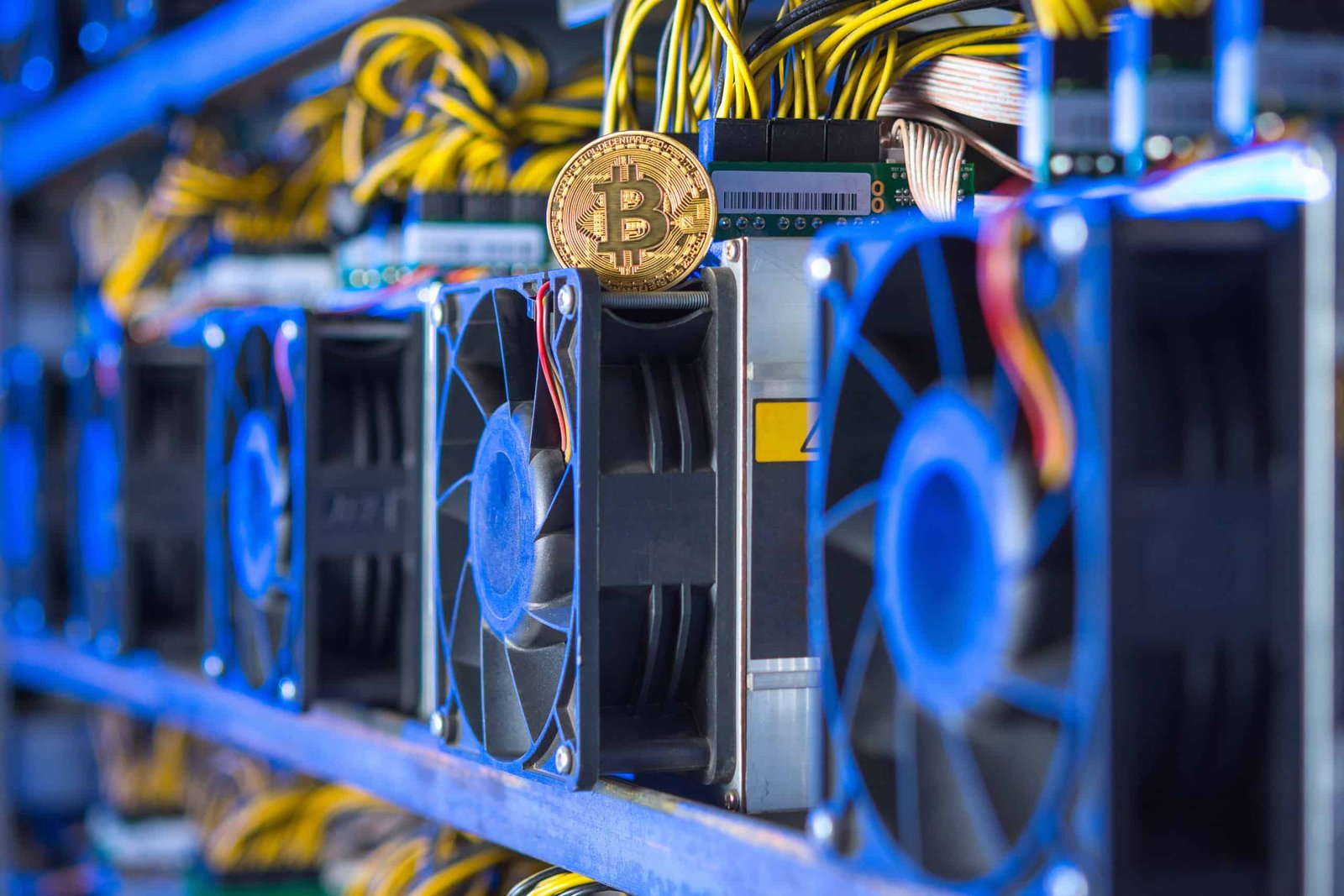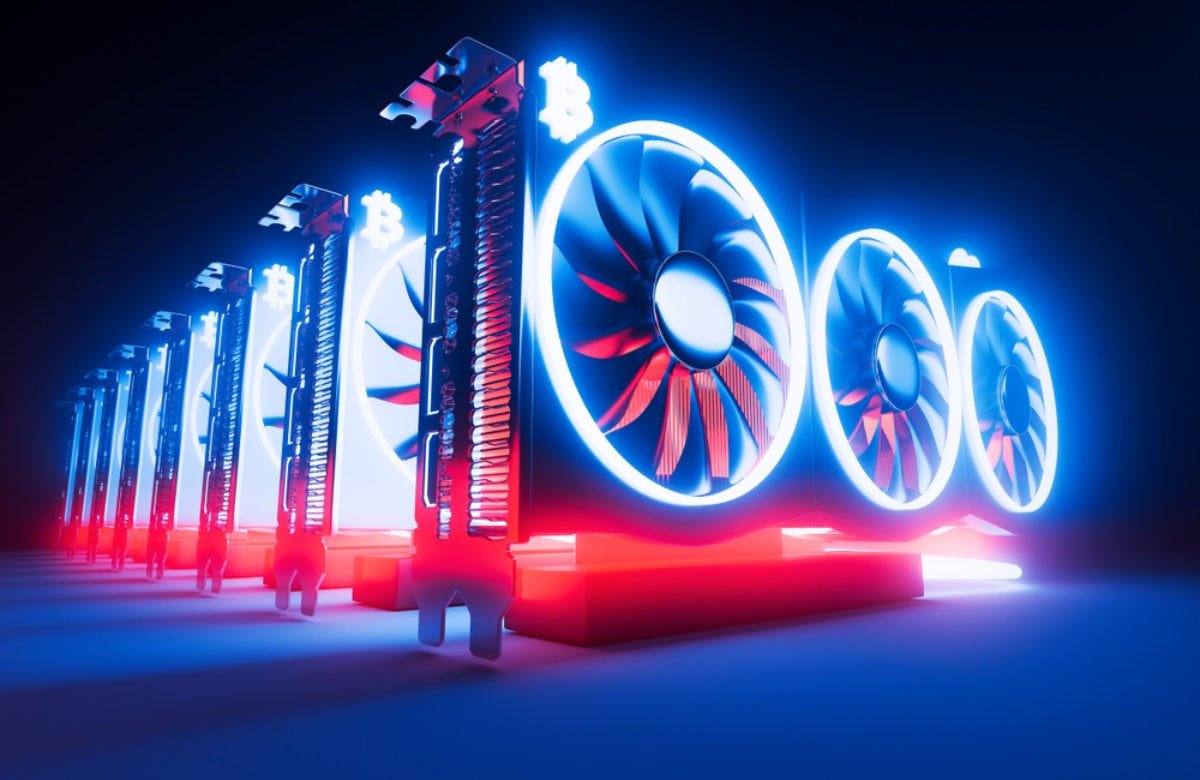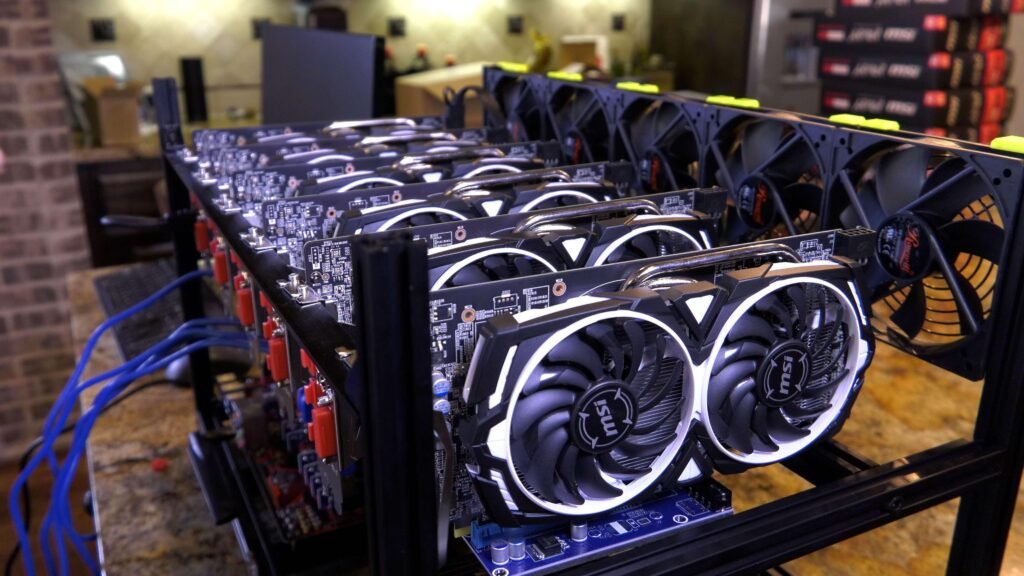Finding the right Bitcoin mining hardware comparison can make the difference between profitable mining and costly mistakes. With Bitcoin’s price volatility and increasing mining difficulty, choosing the optimal mining equipment has never been more critical for both newcomers and experienced miners.
The cryptocurrency mining landscape has evolved dramatically since Bitcoin’s early days when desktop computers could mine blocks successfully. Today’s Bitcoin mining hardware comparison reveals a sophisticated ecosystem where Application-Specific Integrated Circuits (ASICs) dominate the network, while Graphics Processing Units (GPUs) serve alternative cryptocurrency mining operations.
Whether you’re planning your first mining rig or upgrading existing equipment, understanding the performance metrics, power consumption, and return on investment of different mining hardware is essential. This comprehensive guide examines the leading Bitcoin mining equipment available in 2025, helping you make informed decisions based on your budget, technical expertise, and profitability goals.
Best Bitcoin Mining Hardware Comparison: ASIC vs GPU Performance
ASIC Mining Equipment Analysis
ASIC miners represent the pinnacle of Bitcoin mining efficiency. These specialized devices are engineered exclusively for SHA-256 hashing, delivering unmatched performance compared to general-purpose hardware.
The Bitmain Antminer S21 Pro leads the 2025 ASIC mining equipment market with impressive specifications:
- Hash Rate: 234 TH/s
- Power Consumption: 3,510W
- Efficiency: 15 J/TH
- Price Range: $8,000-$12,000
WhatsMiner M56S++ offers competitive performance:
- Hash Rate: 212 TH/s
- Power Consumption: 3,276W
- Efficiency: 15.5 J/TH
- Price Range: $7,500-$11,000
Canaan AvalonMiner 1466 provides mid-range options:
- Hash Rate: 150 TH/s
- Power Consumption: 3,420W
- Efficiency: 22.8 J/TH
- Price Range: $5,000-$8,000
GPU Mining Setup Considerations
While GPUs cannot compete with ASICs for Bitcoin mining, they remain valuable for:
- Alternative cryptocurrency mining
- Flexible mining operations
- Lower initial investment requirements
- Resale value retention
NVIDIA RTX 4090 specifications:
- Hash Rate: 120 MH/s (Ethereum)
- Power Consumption: 450W
- Price: $1,500-$2,000
- Best for: Multi-algorithm mining
AMD RX 7900 XTX performance metrics:
- Hash Rate: 95 MH/s (Ethereum)
- Power Consumption: 355W
- Price: $900-$1,200
- Best for: Cost-effective mining operations
Cryptocurrency Mining Rig Profitability Analysis

Bitcoin Mining Profitability Calculator Factors
Calculating mining profitability requires considering multiple variables that directly impact your return on investment.
Essential Profitability Factors:
Hash Rate Performance Your mining hardware’s hash rate determines how many calculations per second your equipment can perform. Higher hash rates increase your chances of successfully mining blocks and earning rewards.
Power Consumption Costs Electricity expenses typically represent 60-80% of mining operational costs. Regions with electricity costs below $0.10/kWh generally offer better profitability prospects.
Mining Difficulty Adjustments Bitcoin’s mining difficulty adjusts every 2,016 blocks (approximately 14 days) based on network hash rate changes. Increasing difficulty reduces individual miner profitability.
Bitcoin Price Volatility Cryptocurrency price fluctuations significantly impact mining profitability. Higher Bitcoin prices improve margins, while price drops can make mining unprofitable.
ROI Calculations for Different Mining Equipment
ASIC Miner ROI Example:
- Initial Investment: $10,000 (Antminer S21 Pro)
- Monthly Revenue: $800 (at current difficulty)
- Monthly Electricity: $300 ($0.10/kWh)
- Monthly Profit: $500
- Break-even Period: 20 months
GPU Mining Rig ROI Example:
- Initial Investment: $6,000 (8x RTX 4090)
- Monthly Revenue: $600 (multi-coin mining)
- Monthly Electricity: $250
- Monthly Profit: $350
- Break-even Period: 17 months
Mining Pool Selection and Performance Impact
Top Bitcoin Mining Pools Comparison
Choosing the right mining pool significantly affects your mining rewards and consistency.
F2Pool Performance Metrics:
- Pool Hash Rate: 25% of the network
- Fee Structure: 2.5%
- Payment Method: PPS+
- Minimum Payout: 0.005 BTC
Antpool Statistics:
- Pool Hash Rate: 20% of the network
- Fee Structure: 1-4% (varies by payment method)
- Payment Method: PPS, PPLNS
- Minimum Payout: 0.001 BTC
Slush Pool Features:
- Pool Hash Rate: 8% of the network
- Fee Structure: 2%
- Payment Method: Score-based
- Minimum Payout: 0.001 BTC
Pool Selection Strategies
Consider These Pool Factors:
Hash Rate Distribution Larger pools provide more consistent payouts but lower individual reward percentages. Smaller pools offer higher variance but potentially larger individual rewards.
Fee Structures Mining pool fees typically range from 1-4%. Lower fees mean higher net profits but consider payment reliability and pool stability.
Geographic Location Choose pools with servers near your location to minimize latency and maximize mining efficiency.
Payment Methods Different pools offer various payment schemes (PPS, PPLNS, Solo) that affect payout timing and amounts.
ASIC Mining Equipment Setup and Optimisation

H3: Hardware Installation Best Practices
Proper ASIC setup ensures optimal performance and longevity.
Cooling Requirements ASIC miners generate substantial heat requiring adequate ventilation:
- Ambient temperature: Below 35°C (95°F)
- Airflow: 200+ CFM per miner
- Humidity: 45-75% relative humidity
Power Infrastructure Stable power delivery prevents equipment damage:
- Dedicated 220V circuits for high-wattage miners
- Uninterruptible Power Supply (UPS) for power stability
- Professional electrical installation recommended
Network Connectivity Reliable internet connection ensures consistent mining:
- Minimum 10 Mbps bandwidth per 100 miners
- Ethernet connections preferred over Wi-Fi
- Backup internet connection for redundancy
Firmware and Software Optimisation
Custom Firmware Benefits:
- Improved hash rate performance
- Enhanced power efficiency
- Advanced monitoring capabilities
- Overclocking and underclocking options
Popular Firmware Options:
- Braiins OS+: Open-source firmware with auto-tuning
- Hiveon ASIC: User-friendly interface with remote management
- VNish: Performance optimisation-focused firmware
GPU Mining Setup Guide for Alternative Cryptocurrencies
Building Efficient GPU Mining Rigs
While GPU mining isn’t viable for Bitcoin, it remains profitable for other cryptocurrencies.
Motherboard Selection Choose motherboards supporting multiple GPUs:
- ASRock H110 Pro BTC+: Supports 13 GPUs
- ASUS B250 Mining Expert: Supports 19 GPUs
- MSI Z170A Gaming Pro Carbon: Supports 7 GPUs
Power Supply Requirements Calculate total power consumption plus 20% safety margin:
- 80+ Gold efficiency rating minimum
- Modular cables for cleaner builds
- Multiple units for high-GPU count rigs
Cooling Solutions Effective cooling prevents thermal throttling:
- Open-air rig frames for better airflow
- Industrial fans for ambient cooling
- Individual GPU thermal management
Multi-Algorithm Mining Strategies
Profitable Alternative Cryptocurrencies:
- Ethereum Classic (ETC): GPU-friendly algorithm
- Ravencoin (RVN): ASIC-resistant design
- Conflux (CFX): Emerging GPU-mineable coin
- Kaspa (KAS): High-performance DAG protocol
Mining Software Options:
- NiceHash: Automated algorithm switching
- Awesome Miner: Advanced mining management
- HiveOS: Linux-based mining platform
- Minerstat: Cloud-based mining management
Read More: How Bitcoin Price Impact from ETF Approval Transformed the Cryptocurrency Market
Advanced Mining Hardware Considerations
Emerging Mining Technologies
Immersion Cooling Systems Advanced cooling technology submerges miners in dielectric fluid:
- 50% reduction in power consumption
- Extended hardware lifespan
- Higher density installations
- Initial setup costs: $50,000+
Next-Generation ASIC Development Upcoming mining hardware innovations:
- 5nm and 3nm chip manufacturing
- Improved efficiency ratios below 10 J/TH
- Enhanced thermal management systems
- Reduced noise levels for residential use
Environmental and Regulatory Considerations
Sustainable Mining Practices Environmental consciousness influences mining operations:
- Renewable energy integration
- Carbon offset programs
- Waste heat recovery systems
- Green mining certifications
Regulatory Compliance Stay informed about local mining regulations:
- Electrical safety standards
- Noise ordinances
- Environmental impact assessments
- Tax implications for mining income
Mining Hardware Maintenance and Troubleshooting
H3: Preventive Maintenance Schedules
Regular maintenance ensures optimal mining performance and extends equipment lifespan.
Monthly Maintenance Tasks:
- Clean dust from cooling fans and heat sinks
- Check power cable connections
- Monitor hash rate performance trends
- Update firmware and mining software
Quarterly Maintenance Requirements:
- Thermal paste replacement
- Fan bearing lubrication
- Power supply efficiency testing
- Network connectivity optimization
Annual Maintenance Procedures:
- Complete hardware inspection
- Electrical system safety check
- Mining rig performance benchmarking
- Equipment upgrade planning
Common Mining Hardware Issues
Hash Rate Degradation Symptoms and solutions for declining performance:
- Thermal throttling due to cooling issues
- Firmware corruption requiring reinstallation
- Hardware component aging
- Network connectivity problems
Power-Related Problems Electrical issues affecting mining operations:
- Voltage fluctuations damaging equipment
- Insufficient power supply capacity
- Circuit breaker tripping
- Power factor correction needs
Future-Proofing Your Mining Investment
Technology Roadmap Considerations
Bitcoin Halving Impact The next Bitcoin halving (projected 2028) will reduce block rewards, affecting mining profitability calculations.
Network Difficulty Projections Mining difficulty increases by approximately 3-5% monthly, requiring hardware efficiency improvements to maintain profitability.
Hardware Depreciation Models Mining equipment typically loses 50-70% value annually due to:
- Technological advancement
- Efficiency improvements in newer models
- Market saturation
- Network difficulty increases
Scaling and Expansion Strategies
Gradual Expansion Approach Start with smaller investments and reinvest profits:
- Begin with 1-3 mining units
- Reinvest 50% of profits into additional hardware
- Monitor ROI before major expansions
- Maintain 6-month operating expense reserves
Infrastructure Scaling Considerations Plan for Future Growth Requirements:
- Electrical capacity upgrades
- Cooling system expansion
- Network infrastructure improvements
- Physical space allocation
Conclusion
This comprehensive Bitcoin mining hardware comparison reveals that successful mining in 2025 requires careful equipment selection, proper setup, and ongoing optimization. ASIC miners dominate Bitcoin mining efficiency, while GPUs serve alternative cryptocurrency mining operations effectively.
The key to profitable mining lies in balancing initial investment costs, operational expenses, and potential returns. Whether choosing high-end ASIC equipment or building GPU mining rigs, thorough research and realistic profitability projections ensure better investment outcomes.
FAQs
Q: What is the most profitable Bitcoin mining hardware in 2025?
A: The Bitmain Antminer S21 Pro currently offers the best efficiency at 15 J/TH, making it the most profitable Bitcoin mining hardware for large-scale operations. However, profitability depends on electricity costs, with break-even typically requiring rates below $0.12/kWh.
Q: Can I still mine Bitcoin profitably with GPU mining equipment?
A: No, GPU mining is no longer profitable for Bitcoin due to ASIC dominance. GPUs are better suited for alternative cryptocurrencies like Ethereum Classic, Ravencoin, or Kaspa, which offer better returns for GPU miners.
Q: How do I calculate Bitcoin mining hardware ROI accurately?
A: Use online Bitcoin mining profitability calculators that factor in hash rate, power consumption, electricity costs, pool fees, and current difficulty. Include hardware depreciation (typically 20-30% annually) and potential difficulty increases in your calculations.
Q: What electricity cost makes Bitcoin mining profitable?
A: Generally, electricity costs below $0.10/kWh provide good profit margins, while costs above $0.15/kWh make mining challenging. The exact threshold depends on Bitcoin prices, mining difficulty, and hardware efficiency.
Q: Should I buy new or used Bitcoin mining hardware?
A: New hardware offers warranties and maximum lifespan but requires a higher initial investment. Used equipment can provide faster ROI but carries risks of reduced lifespan and no warranty coverage. Consider used equipment only from reputable sellers with performance guarantees.
















